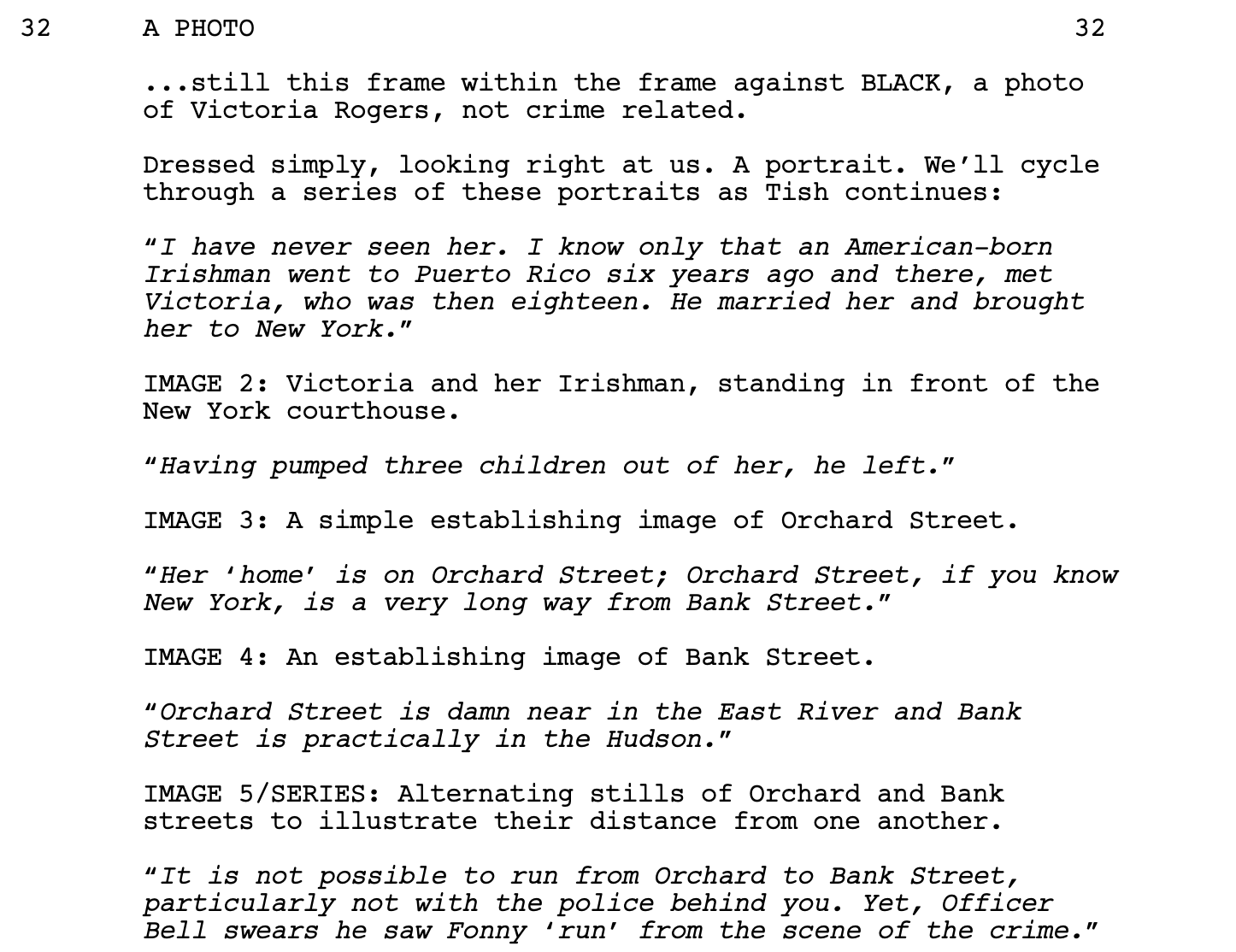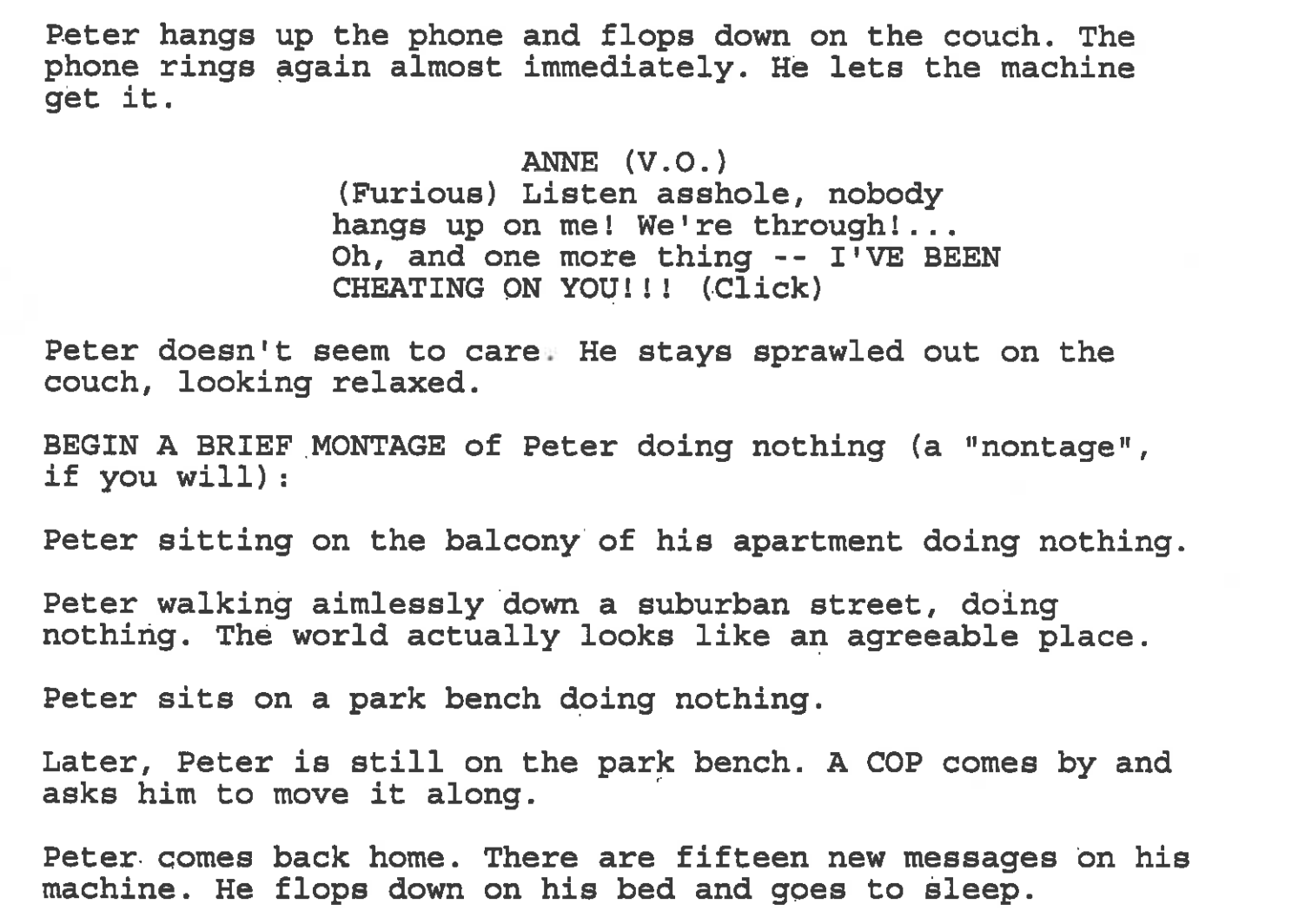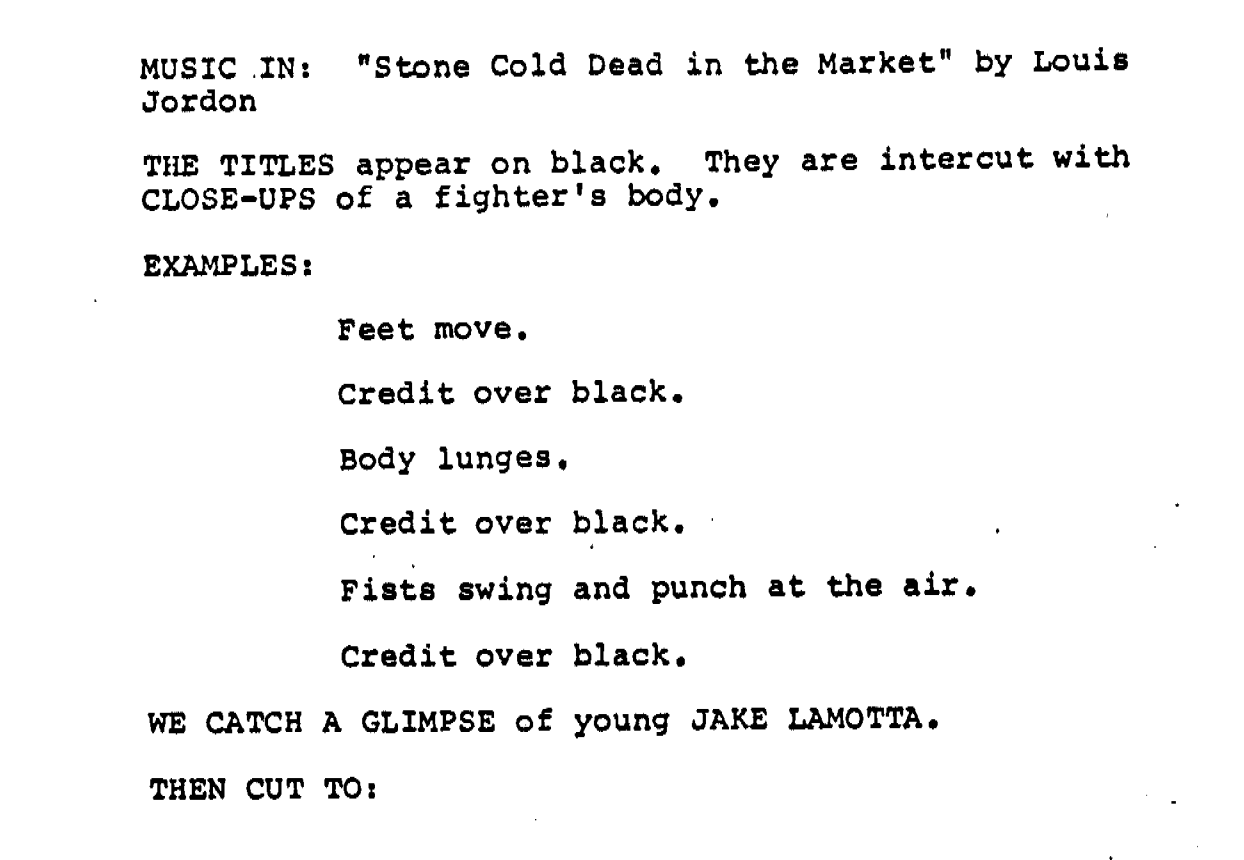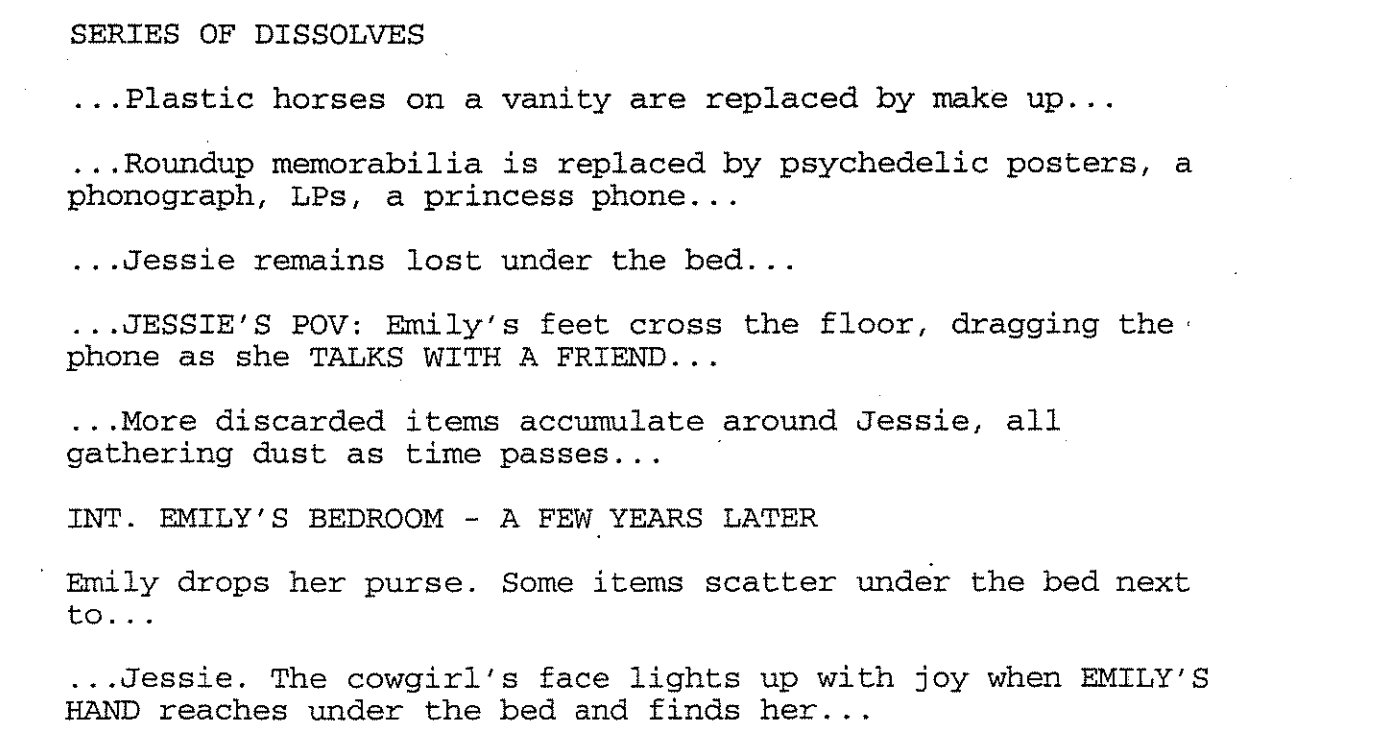WRITING YOUR SCREENPLAY WHILE SOCIAL DISTANCING: MONTAGE AND SERIES OF SHOTS
Occasionally in the library we get asked how to format montages or quick series of shots.
Every once in a while, a movie explicitly needs a small montage — usually to condense the passage of a long span of time into a much shorter span of time, i.e. a character getting older, falling in love, getting used to a new job, etc.
Montages can function like the cinematic equivalent of a collage, perhaps to establish a location or activity or even an idea.
There aren’t hard and fast rules for the formatting of a montage. Since the beginning of formal screenwriting tradition, montages have tended to look on the page like a list. Exactly how you format that list is up to you as the writer.
As you’ll see in some of the following examples, there’s no wrong or right way to go about it. Montage is often a place to be creative and express a unique voice.
HE GOT GAME (1998)
Written by Spike Lee
Yes, at first glance, this is a giant blob of text. Lots of writing advice warns against bulky paragraphs, yet this opening description elicits majesty in its tone. Basketball is epic!!
IF BEALE STREET COULD TALK (2018)
Written for the Screen and Directed by Barry Jenkins
Based on the book by James Baldwin
In a very literary way, Jenkins formats Tish’s voice-over in quotes. This description effortlessly interweaves spoken words with individual images.
Note the clarity of labeling each image “IMAGE 1,” “IMAGE 2,” etc.
IT HAPPENED ONE NIGHT (1934)
Screenplay by Robert Riskin
Based on the short story Night Bus by Samuel Hopkins Adams
Even in 1934, writers formatted montages much like we format them today.
Note the text of headlines is in all CAPITAL letters without any excess description.
LITTLE WOMEN (2019)
Screenplay by Greta Gerwig
Based on the novel by Louisa May Alcott
There’s an interesting stylistic element at work here in that Gerwig writes all scenes that take place in the past with red text.
This montage consists of a quick bulleted list that gives us a sense of what happens during a day at the ocean.
OFFICE SPACE (1999)
Screenplay by Mike Judge
Based upon the "Milton" animated shorts by Mike Judge
We wanted to include this because we love the idea of a “nontage.”
RAGING BULL (1980)
Screenplay by Mardik Martin and Paul Schrader
Based on the autobiography by Jake La Motta
This is the first page of this draft. Paul Schrader has described as screenplay as “An invitation to collaborate”….
Note how this text is simple and suggestive so that another artist can fill in the blanks.
TOY STORY 2 (1999)
Screenplay by Andrew Stanton and Rita Hsiao and Doug Chamberlin & Chris Webb
Original story by John Lasseter and Peter Docter and Ash Brannon and Andrew Stanton
Note how the ellipses give this montage a feeling of fluidity.
Note the reveal and gut-punch at the end.
This a technique used in all kinds of art — breaking-up a pattern with a NEW image to pack a greater punch.
WHEN HARRY MET SALLY (1989)
Written by Nora Ephron
This formatting is a great way to show voice-over happening OVER a montage simultaneously. It’s very effective for when you want to communicate passage of time, but want to make sure we hear the character’s real time commentary on what we see.
20th Century Women (2016) and Roman Holiday (1953) are two other scripts that use this technique well.
If you have questions about montages or about other scripts or topics, feel free to e-mail the WGF Library staff at library@wgfoundation.org.
Until next time, happy writing!










